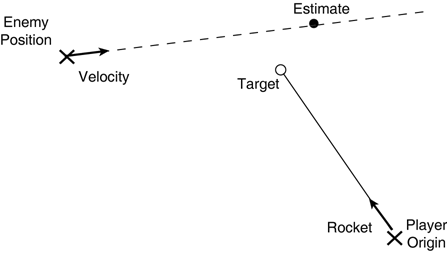Case Study
| A few points made in the previous chapters need expanding to more fully explain how they affect the target selection. We'd like to determine what properties of the situation affect the likelihood of damage, and the benefit of particular targets. First, certain features affect the problem directly. Figure 20.1 shows the four points in space involved in the problem with five key features: Figure 20.1. Possible scenario with one selected target, close to the predicted position of the enemy.
Second, some properties of the animat may influence the choice of targets:
Given these key factors, it may be possible to guess how much damage the projectile will inflict upon the enemy. Because manually designing a system that can predict the damage is complex enough, a perceptron is used to learn this task. |
EAN: 2147483647
Pages: 399
- Basic MPLS VPN Overview and Configuration
- Case Study-Hub and Spoke MPLS VPN Network with Sites Using Same AS Numbers
- Implementing Quality of Service in MPLS Networks
- Modular QoS CLI: Configuration of QoS on Cisco Routers
- Case Study 6: Implementing Class-Based Tunnel Selection with MPLS Traffic Engineering
